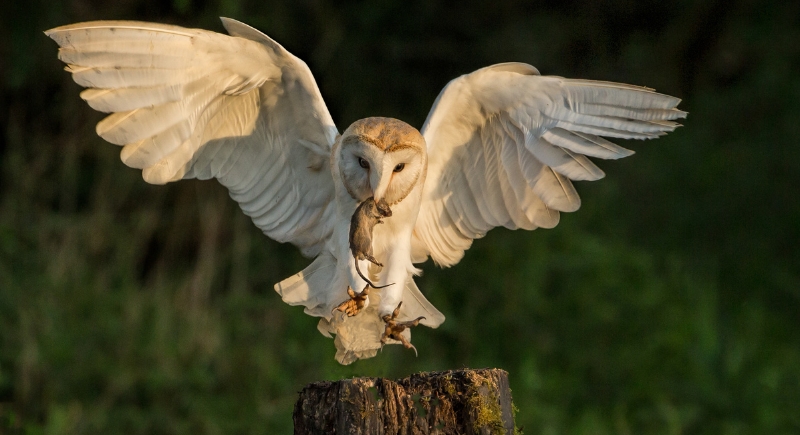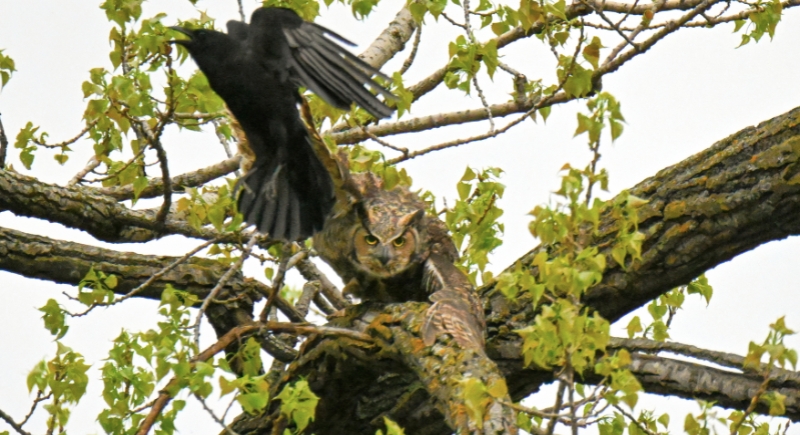Why Do Crows and Owls Absolutely Hate Each Other?
Anyone who has spent time in a park or backyard has probably noticed how noisy crows can get when an owl is nearby. The calls get louder, more birds join in, and before long, the owl is surrounded and under siege.
It might look like harassment, but it’s actually survival. Crows see owls as dangerous predators, while owls would happily prey on a young crow if given the chance. That tension explains why this rivalry keeps playing out wherever the two birds share space.
Why Owls Go After Crows

Image via Getty Images/Alan Walker
Their fight starts with food. Owls are powerful nocturnal hunters with sharp talons, excellent night vision, and the ability to fly almost silently. Larger species like Great Horned Owls or Barred Owls have been known to raid crow nests for hatchlings. They don’t specifically target crows, but a nest of chicks makes for an easy meal.
Since owls hunt at night, they strike when crows are most vulnerable, fast asleep in their trees. While owls don’t usually build nests themselves, they often reuse those abandoned by hawks, herons, or squirrels. This still puts them in competition with crows, since both species seek out prime nesting spots in the same territories. For crows, owls are both predators and rivals.
Why Crows Fight Back
If you’ve ever seen a mob of crows harassing an owl, you’ve witnessed their counterattack. Crows are diurnal, meaning they’re awake when owls are trying to rest. A single crow spotting an owl can summon its entire flock with one alarm call. These groups, called murders, can range from a handful of birds to hundreds, and they work together to drive owls out of the area.
Their strategy, known as mobbing, involves swooping, dive-bombing, and relentless cawing until the owl retreats. While risky, studies show that mobbing reduces the chance of predation later. In other words, crows put in the effort during daylight to make sure owls don’t settle nearby.
Who Has the Upper Hand?

Image via Getty Images/Tammi Mild
One-on-one, an owl has the clear advantage. A Great Horned Owl’s talons can exert an estimated grip of around 300 psi, strong enough to crush bones, and its stealthy ambush style allows it to hunt effectively at speeds closer to 30 miles per hour. Crows can’t match that raw power, nor do their beaks inflict much damage.
But owls are solitary, while crows are highly social. Their intelligence, memory, and ability to pass knowledge down through generations mean they rarely fight alone. A mob of crows has been known to chase an owl across the forest in noisy pursuit. They rarely kill owls, but they almost always succeed in forcing them to retreat.
A Feud Without an End
What’s fascinating is how this rivalry persists. Young crows quickly learn from older flock members to harass owls, so even inexperienced birds pick up the behavior early. Owls, on the other hand, don’t usually fight back during daylight raids. They conserve energy until nightfall when they regain the advantage. The cycle is simple: owls prey on crows when they can, and crows make life miserable for owls in return. Neither side truly wins, but neither will back down.
So next time you hear crows raising a racket in the trees, you’ll know the backstory. It’s not random noise. It’s part of a rivalry that’s been going on for generations and doesn’t look like it will end soon. Owls win in power, but crows, with their teamwork and persistence, often win the territory. And in the end, the woods are just a little more dramatic because of it.